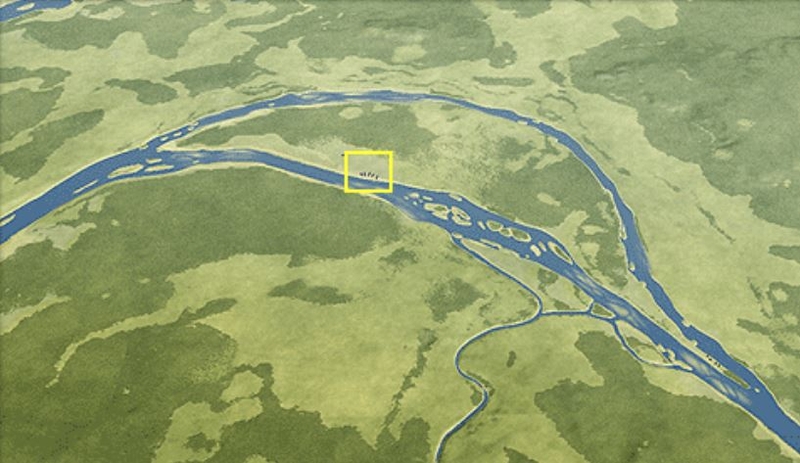- Home
- The city
- The first inhabitants
- The occupations at the Louvre
Locations of the occupations at the Louvre.
3D graphics © A.-B. Pimbaud.
Within the framework of the "Grand Louvre" project, a series of archaeological operations were carried out between 1983 and 1993, prior to and during construction work. Excavations in the Jardins du Carrousel shed light on the history of the site from the Neolithic era up to the 19th century.
The Neolithic area
The first signs of occupation date from the Neolithic. Sometime in the fifth millennium BCE, populations of farmers and animal breeders settled in the fertile fields of the alluvial plain, nine metres above the lowest level of the Seine. The site has yielded small pits that were dug to extract loam, and which were filled in later with household waste (stone chips, pieces of ceramic, and fragments of daub), indicating the proximity of a habitation zone.
Excavation of a neolithic pit, with rubefied daub.
© Cliché fouille des Jardins du Carrousel.
The Bronze Age
Very few vestiges of occupation between the Neolithic and the Bronze Age were found. The only item attributable to this period is a grave, possibly consisting of a wooden casket, set up in a rectangular pit. The deceased was a well-built adult male, buried on his back with his legs folded so that his knees touched his shoulders. No funerary objects were found.
At the end of the Bronze Age, several hollow structures, including grain pits, post-holes and perhaps a funerary circle, testify to a new human occupation. These traces definitely point to the presence of inhabitants on the banks of the Seine. This could be an isolated farm: the large variety of organic remains attests to the presence of diverse agricultural activity.
Late Neolithic or early Bronze Age grave.
© Cliché fouille des Jardins du Carrousel.
The Iron Age
The Iron Age occupation left more numerous traces: grain pits and graves containing a sword and rings.


